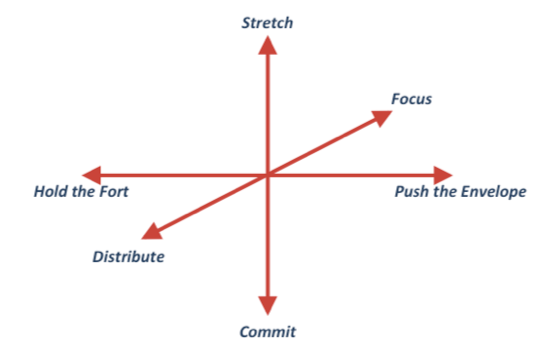Below is the next in a series of guest articles by Capiche friend and colleague John Lamy.
The research is conclusive: teams perform better when they’re shooting for a Big Goal. Jim Collins (of Built to Last fame) called it the BHAG for Big Hairy Audacious Goal!
But then what? Here’s a handy way of thinking about goals for your group. Consider three interlocking scales:
- Push the Envelope or Hold the Fort. You’ll want one big goal that will carry your organization to a new place: “Introduce the new gigulator to the market by October 1.” Excellent. But in the meantime, you’ll also need a few goals just to keep the lights on. “Meet Production Commitment of 750 current model units shipped by the end of the year.” You’ll want to track that Hold the Fort goal as well. The idea is to balance the two kinds.
- Stretch Goals. I personally don’t like them. The definition is that we’re only 70% likely to achieve them. I think stretch goals can burn people out and be demoralizing when the team falls short. But the research finds that organizations perform at a higher level with stretch goals than with easier goals that everyone is 100% committed to. Go figure. I still vote for Committed rather than Stretch.
- Distributed throughout the Organization or Focused on just one or two departments. In my Silicon Valley experience, I found goals shared by the whole company were much more fun and effective. In the mid-80s, Hewlett-Packard focused the entire international company on improving the reliability of our electronic instruments by a factor of 10. Yes! A big, big goal. But we did it, and it truly brought out the best in the whole corporation.

I think setting out a Big Goal is one of the best, most energizing things you can do to move your company forward. If you decide to do it, keep these three dimensions in mind. That will be one more factor that will help you succeed.





